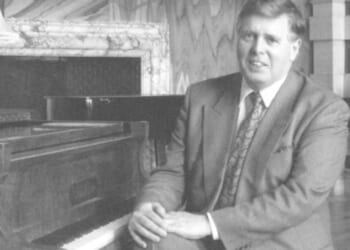IN MAY, my wife and I cycled the Camino Portugués from Lisbon to Santiago, having enjoyed the Camino Francés, from the Pyrenees to Santiago, three years ago. We have become addicted to cycling pilgrimages — true “bicigrinos”. And, no, our bikes were not electric. . .
On the Camino Francés, which is about 500 miles, we calculated that we climbed a total of 36,000 feet. The Portugués is slightly shorter and much gentler, although we encountered many challenges, including aquatic and arboreal ones (see photos). Portugal is very beautiful, and the sections of the route which cling to the coast are glorious.
We followed in a very long tradition. The first Christian buildings were martyria, built where martyrs had met their death. The word literally means “a place that bears witness”. Christians visited these buildings on the anniversary of the saint’s martyrdom, and for prayer at other times. The earliest testimony that we have to this practice is a letter from the community at Smyrna to that at Philomelium, describing the martyrdom of its bishop, Polycarp, c.160.
After the conversion of the Emperor Constantine, St Cyril of Jerusalem did more than anyone else in the fourth century to establish pilgrimage to the Holy Land in general, and Jerusalem in particular, as being of central importance to Christian piety. Cyril enjoyed help from the Emperor himself, who encouraged pilgrimage to the holy sites, and used the holy city of Jerusalem as a symbolic focus of his new Christian empire.
In the year 326, Constantine’s mother, Helena, went on a celebrated pilgrimage; and, within a short period of time, countless pilgrims had come to Jerusalem — including, in 333, a pilgrim from Bordeaux, whose diary gives a fascinating view of these early years of Christian pilgrimage after 325.
GRADUALLY, centres of pilgrimage emerged all over Europe. There were, among many others, shrines to St Martin in Tours, St Francis in Assisi, St Thomas Becket in Canterbury, and — one of the most popular — St James in Compostela. Their multiplication was given a tremendous boost in the 11th and 12th centuries by the loss of the Holy Land, making pilgrimage there impossible.
It is difficult to overestimate the importance that pilgrimage had in medieval Christianity. It has even been suggested that it constituted a collective phenomenon that structured the whole of Western Christianity. It is, at the very least, astonishing what distances so many of our medieval forebears covered on pilgrimage at a time when travelling was not at all easy.
 H-J Colston-IngeH-J Colston-Inge
H-J Colston-IngeH-J Colston-Inge
Although pilgrimage fell out of favour in this country and others at the time of the Reformation, it has become popular again as a fruitful metaphor for the Christian life. Pilgrimage combines the biblical themes of places and placelessness in an inspired fashion. This has led to a great resurgence in books of popular piety in the reformed tradition, encouraging us to think of our lives in terms of pilgrimage.
Though they make much of the notion of journey as a model for understanding the Christian life, such books tend to make little mention of the significance of the destination. To the medieval mind, the destination was crucial: it was intended to be a true foretaste of heaven. I love to imagine medieval pilgrims arriving at the cathedral in Santiago, and other shrines, from their wattle-and-daub dwellings, to be confronted with a veritable feast of stone carving and stained glass. What a vision!
The cathedral, with its famous Botafumeiro (a huge thurible) remains hugely impressive, and the joy of the enormous numbers attending the pilgrim masses there is palpable. There are many tears. Those who complete the Camino may or may not be paid-up Christians, or even believers, but making and completing the journey is deeply affecting. Meeting fellow-pilgrims along the way, and hearing their stories, is a memorable experience. I shall hold some of those encounters with me all my life.
HAVING flown with our bikes to Lisbon (a wonderful city), we cycled for 40 or so miles every day, which meant that the whole journey took 11 days. We stopped at some glorious places on our journey. For me, the most memorable were Coimbra and Porto — and Fatima, to which we made a detour. The latter is not aesthetically pleasing, but it has a great air of reverence about it; 470,000 pilgrims were making their way there for national pilgrimage on 12 and 13 May, the majority from the north, while we were cycling in the opposite direction.
Like myriad others, our journeys were guided by John Brierley’s Practical and Mystical Manuals for the Modern-day Pilgrim, which are full of wisdom, both practical and spiritual. There is something spiritually as well as physically liberating about travelling very light: we carried all our baggage with us, and so had a great incentive to take very little.
We booked accommodation only a day in advance, so that life took on a great simplicity. We stayed in albergues — there are plenty of them — sometimes in our own room, and sometimes in a dormitory. The largest of the latter slept 150 people. Accommodation is cheap, as are “pilgrim meals”, often including a bottle of wine, which makes the whole experience very affordable.
I experience pilgrimage as a kind of “retreat on the move”, with plenty of opportunity on the way for prayer and reflection. In the Gospels, the Christian life is described as being “on the way” with Jesus. When on pilgrimage, I feel very much that I am exactly that: “on the way” with Jesus.
Dr John Inge is a former Bishop of Worcester, and an honorary assistant bishop in the diocese of Salisbury.















